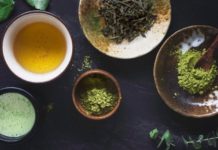
During a recent curbside conversation with my neighbour, Shawna, she mentioned that she had been busy with her annual spring cleaning blitz.
During a recent curbside conversation with my neighbour, Shawna, she mentioned that she had been busy with her annual spring cleaning blitz.
“How’s that going?” I asked.
“A heck of a lot better this year than last,” she said.
Shawna related that during last year’s spring cleaning, her then three-year-old son Tanner complained about having a ‘tuffy nose. She explained that a ‘tuffy nose was Tanner’s way of telling her that he was becoming congested and didn’t feel well. “It was weird,” she said, “one minute the kid was fine, and the next he was quite stuffed up and his eyes were red and irritated.”
Words of Warning
During a discussion with her husband Richie, the Langley, BC, mother realized that it wasn’t the first time Tanner appeared to be reacting to something in the house.
“We both recalled that Tanner usually displayed the symptoms on weekends, which was when we did our household cleaning,” Shawna said. “We suspected the little guy was reacting to something in the cleaners, which surprised us because we were using basic products you can get in most grocery stores. It wasn’t until we looked at the fine print on the labels that we realized many of the cleaners weren’t benign and some of their cautions were downright scary.”
My neighbour said they had been using a mildew remover that warned its vapours might irritate, and that the product should only be used in well-ventilated areas. “I opened windows,” Shawna said, “but the fumes still drifted throughout the upstairs.”
She also noted that their all-purpose cleaner’s green liquid blurred the small-print precautions, rendering them virtually unreadable. In addition, the warning on the ammonia glass cleaner advised against using the product with bleach but didn’t explain why.
“I later found out,” said Shawna, “that ammonia–sometimes unlabelled in cleaning products–when mixed with bleach creates poisonous chlorine gas. In our zeal to rid the house of dirt and germs, we were risking our health, particularly Tanner’s.”
Natural Alternatives
Shawna decided to thoroughly research and learn about alternatives to the products she had been using. “I discovered that there are many natural cleaners to choose from. Not only are green cleaners available at health stores, but mainstream vendors are also starting to stock them.”
“At one natural health store, I noticed that the eco-friendly cleaning products were well labelled and fully disclosed their contents. The clerk advised me that, in addition to
consumer-friendly labelling, manufacturers of natural cleaners strive to create products that are nontoxic, nonpoisonous, noncorrosive, phosphate-free, hypoallergenic, and biodegradable.”
The store clerk told Shawna that Canadians annually use approximately 54,000 tons of household cleaners, with most of the waste being dumped into local septic and sewer systems, causing untold damage to our waterways and marine life. She had never before considered the big-picture ramifications of using potentially toxic cleaners.
As she reached for her empty recycling box, Shawna added, “Whether its spring cleaning or our weekly cleanup, since we’ve been using natural cleaners, the process has been much more pleasant. Tanner’s nose doesn’t get ‘tuffy, we’re impressed with the cleaning powers of the products, and we don’t have potentially toxic fumes wafting through the house.”
What’s in Your Cleaner?
The Labour Environmental Alliance Society, a BC-based group of environmental and labour activists, has compiled a Toxins Table, which looks at a variety of household cleaners and products, and whether they contain harmful toxins. The table lists eight ingredients that have been identified as being carcinogens, endocrine disruptors, or reproductive toxins:
- 2-butoxyethanol
- ethoxylated nonyl phenols (NPEs)
- methylene chloride
- naphthalene
- silica
- toluene
- trisodium nitrilotriacetate (NTA)
- xylene
For more information: leas.ca/Toxins-Table.htm.















